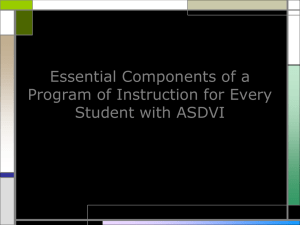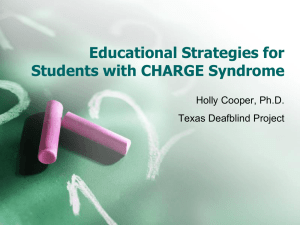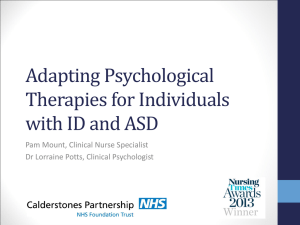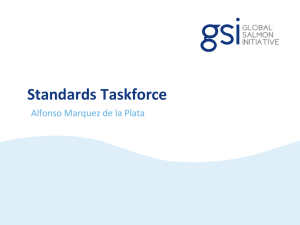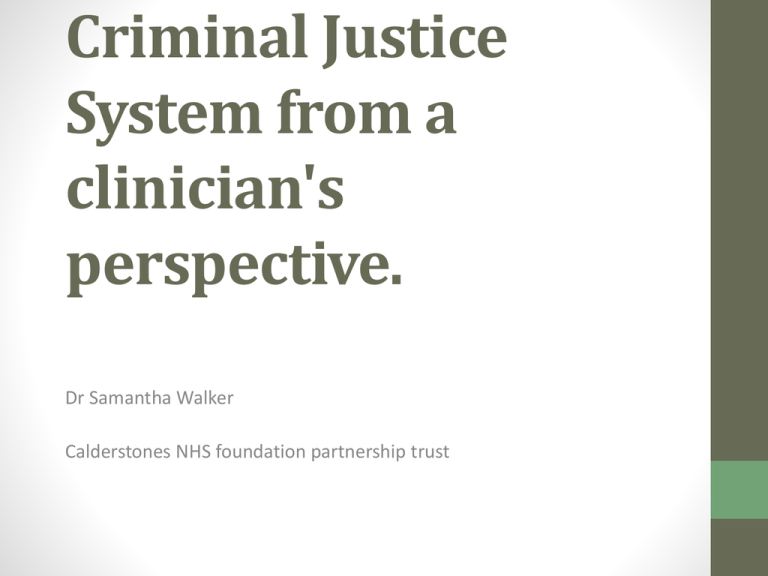
Criminal Justice
System from a
clinician's
perspective.
Dr Samantha Walker
Calderstones NHS foundation partnership trust
Who are we?
• A large secure provision in the North West for people with a
learning disability.
• We have medium, low and “step down” facilities.
• We cater for both male and female clients
• We admit people on section and through home office
jurisdiction
• We also have individualised models of care around specific
individuals who have “failed” in other services
Our client group
National Estimates ASC (reported in Emerson & Baines, 2010)
• Individuals with co-morbid ASC and learning disabilities: 20 –
30%
• Adults with learning disability and ASC in residential care: 2350%
Calderstones Inpatient Services (July 2011) Approximately 20%
of our inpatient population
Psychological Formulation
A psychological formulation provides a means to understanding
how individuals’ difficulties have been generated and how they
continue to present a problem. It is in essence, a story about the
individual and the problems they experience.
The formulation enables us to make informed judgements
about the most appropriate support strategies and
treatment approach.
Example of a one page profile:
Generally struggles to make eye contact, but will often make fleeting glances. Staff feel that he seems
to look at the side of an individual rather than at them. When talking about a topic he feels is
important he may make excess eye contact throughout the short interaction.
Face is typically empty of expression and often would not know what he is feeling from expression.
Does smile but not known to laugh.
Does invade other’s personal space but seems to do this for comfort e.g. cuddling. Doesn’t do this in
general conversation. Historically has engaged in this behaviour.
IMPAIRMENTS OF SOCIAL
INTERACTION
ADDITIONAL AUTISTIC
CHARACTERISTICS:
Becomes overloaded very easily: this
can occur in response to noise (blicks
IMPAIRMENTS OF
COMMUNICATION
CLIENTS NAME
TRIAD OF
IMPAIRMENTS
Communicates verbally
Does appear to use gesture to communicate—this appears quite
exaggerated and may be learnt.
Only engages in conversation about things of interest to himself.
Interjects into others conversations
Appears to engage appropriately in reciprocal conversation but this is
for a short time—he eventually gets the topic around to something of
interest to himself
IMPAIRMENTS OF
IMAGINATION
Has interests which historically have described as obsessive
e.g. ‘ need to get back to Burnley’. This appears to have
abated somewhat.
Others interests are: his gaming console , cars and wildlife
programmes. The team felt that these were appropriate in
intensity and form for his age group.
ASC as a key component
Shared
understanding
Individualised
Person centred
Consider strengths
as well as difficulties
Focus on offending behaviour /
difficulties which led to
admission to services
Once we have a diagnosis and a
formulation...
Individual Interventions
Group Interventions
Sharing the formulation
Individual therapy using a range of
models / approaches e.g. Cognitive
Behavior Therapy , (CBT), Cognitive
Analytic Therapy (CAT).
Psycho-educational intervention
Positive behavioural approaches
Good Touch / Bad Touch
Social Problem Solving
Assertion Skills
Managing Anger
Adapted Sex Offender Treatment
Group (ASOTP)
Conversation groups (SALT led)
Managing Meetings (SALT led)
At all times remaining aware of the individuals ASC and moderating
approaches and expectations regarding outcomes accordingly.
...and therapy runs alongside...
Environmental Management
Interactional Style
Communication Strategies
Pro-active problem solving
Sensory Awareness
Resources
Staffing levels / personality
Staff training
Activities / goal setting
ASD Friendly Treatment
and care Plans
ASD Friendly Management
Guidelines
THE AUTISM TEAM: Default Care Pathway
ASC SPECIFIC
DIAGNOSIS
ASSESSMENT,
FORMULATION AND
TREATMENT /CARE
PLAN
ENGAGEMENT AND
INTERVENTION
TRANSITION
PLANNING
OFFENCE SPECIFIC / NON ASC CARE PATHWAY
ASC TEAM CONSULTATION (as required)
RESETTLEMENT
Supporting an individuals communication
•
•
•
•
•
•
•
•
•
•
•
•
•
Total Communication
Makaton
Intensive Interaction
Communication Profiles
Environment (Noise, Lighting, Low stimuli, TV)
Time of the day
Clear and concise communication
Picture boards/ planners/Diaries
Social Stories
sequences (comic strips)
scripts
picture exchange
objects of reference
Establishing a person-centred plan catering to an individuals specific
preferences and needs
• Person-centred support allows us to establish what and who is important to an
•
•
•
•
•
•
individual; including daily routines, likes and dislikes, what is important to the
person now, what is important to the person in the future and how this can be
achieved. Helps us understand how to match support to the person’s needs
Knowing how to use information about a person to improve quality of life
It can be seen that person-centred planning will enhance quality of life and self
esteem to grow.
Person-centred planning is ideal for individuals with Autism as it focuses on the
individual. Sometimes the tools may need to be adapted and terminology changed
so that it is understood.
Help’s someone understand their own autism
Promotes empathy for the person you support, therapeutic relationships and ‘unconditional positive regard’
Helps understand what triggers anxiety and stress for the person you support
Families/Parents/Carers are important!
• Planning should build the person's circle of support and involve all of the
people who are important in that person's life. Person centred planning is
owned and controlled by the person (and sometimes with their closest
family and friends).
• These are the individuals the person wants to be part of developing their
person centred plan and who can help them make things happen. These
are the committed people in the person’s life who know and care about
them.
• It is a good way to learn how to work collaboratively with families and
carers, other professionals and the person themselves
Techniques and approaches to support individuals with
an autistic spectrum condition to learn and develop new
skills
The planning process and people with autism
• In order to make the person centred planning process meaningful for people with
autistic spectrum disorders we have incorporated the SPELL approach by the
National Autistic Society.
That means the process has:
• a clear structure (there are key questions to ask);
• it focuses on the person’s positive attributes (their gifts and strengths);
• there is an empathetic approach (for example, using the means of communication
that the person understands best);
• low arousal (i.e. too many people present at a meeting can be stressful for some);
• links with the most important people and things in the person’s life.
• Understand why it is important to support someone to take risks – risk taking is a
part of human development
How we reduce sensory overload, or increase sensory
stimulation, by making adaptations to the physical and sensory
environment
Ways to help
• Be aware: look at the environment to see if it is creating difficulties for people with an ASD. Can you
change anything?
• Be creative: think of some positive sensory experiences
• Be prepared: tell people with an ASD about possible sensory stimuli they may experience in different
environments.
• Sight:
Hypo (under-sensitive) Increase the use of visual supports.
Hyper (over-sensitive) Reduce fluorescent lighting - use deep-coloured light bulbs instead. Wear
sunglasses. Create a workstation in the classroom: a space or desk with high walls or divides on both sides
to block out visual distractions. Use blackout curtains.
• Sound:
Hypo Use visual supports to back up verbal information.
Hyper Shut doors and windows to reduce external sounds. Prepare a person before going to noisy or
crowded places. Wear ear plugs. Listen to music. Create a workstation.
• Touch:
Hypo Use weighted blankets or sleeping bags.
Hyper Warn a person if you are about to touch him or her; always approach him or her from the front.
Remember that a hug may be painful rather than comforting. Gradually introduce different textures - have
a box of materials available. Allow a person to complete activities themselves (eg, hair brushing and
washing) so that they can do what is comfortable for them.
How we reduce sensory overload, or increase sensory stimulation, by making
adaptations to the physical and sensory environment
• Taste:
Some people with an ASD are hyper- or hyposensitive to taste, and may limit themselves to bland foods or
crave very strong-tasting food. We have not included any ways to help because as long as someone eats a
bit of a varied diet, this isn't necessarily a problem. For more information about ASD and restricted diets
• Smell:
Hypo Use strong-smelling products as rewards and to distract people from inappropriate strong-smelling
stimuli (like faeces).
Hyper Use unscented detergents or shampoos, avoid wearing perfume, make the environment as
fragrance-free as possible.
• Balance:
Hypo Encourage activities that help to develop the vestibular system. For children this could include
using rocking horses, swings, roundabouts and seesaws. For adults, try games like catching a ball or
practise walking smoothly up steps or curbs.
Hyper Break down activities into small, more easily manageable steps; use visual cues such as a finish line.
• Body awareness:
Hypo Position furniture around the edge of a room to make navigation easier. Put coloured tape on the
floor to indicate boundaries. Use the 'arm's-length rule' to judge personal space. This means standing an
arm's length away from other people.
Hyper Do 'fine motor' activities like lacing
Case Examples
And Questions?

